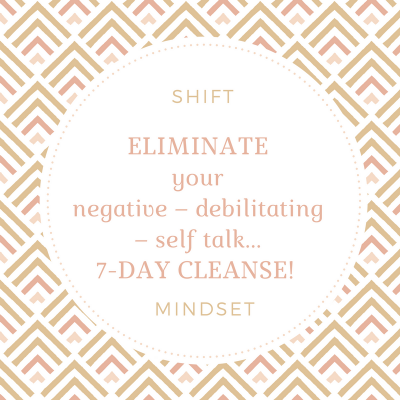Toxic work environments are something that nearly every worker faces at some point in their life. Those who have experienced it know all too well that a hostile work environment is a surefire way to exponentially increase the levels of workplace stress you deal with daily. From vindictive management to lack of communication to bullies for co-workers, work toxicity ends up affecting more than just your working hours.
Considering that toxic work environments can negatively impact your personal life and, in some cases, even your physical health, it’s natural that you’d want to avoid working in one ever again. Of course, the ultimate question is: How do you know a prospective new place of work is toxic or not? What are the warning signs? How can you learn about the culture of the workplace before you work there?
One of the first places to start is by learning more about what is and is not acceptable from your place of work. Unfortunately, companies with awful working environments aren’t that uncommon. Because of this, it’s not unreasonable to say that many people in the workforce have experienced toxic work environments exclusively throughout their careers. This can make it even more difficult to recognize the signs of toxicity for what they are, which then leads to the continuation of toxic workplaces.
To break this harmful cycle, it’s essential to enlist some simple, yet effective ways to spot a toxic work environment — before you take that new job offer.
Take a Look Around
Avoiding a toxic work environment starts with knowing what is and is not acceptable from your place of work. Unfortunately, companies with awful working environments aren’t that uncommon throughout the world. It’s not so unreasonable to say that there are probably several people in the workforce who have experienced toxic work environments exclusively throughout their careers. Unfortunately, this can make it even more difficult to recognize the signs of toxicity for what they are, which then leads to the continuation of working in toxic environments.
Whether you’re content with your place of work or not, familiarizing yourself with what does and does not qualify as workplace toxicity is important — and don’t assume you know. Harmful and toxic actions come in many different shapes and forms. In some cases, the workplace can be toxic simply by the nature of who works at the company. For example, if you’re in a minority group, such as a woman in a male-dominated field, you may have felt under-represented at a previous job (or at your current one). Any company whose core values include fostering a positive, healthy work environment should have diversity initiatives put in place to make everyone feel valued and included.
It’s important to have the opportunity to build relationships with coworkers who look like you and share similar experiences, regardless of industry. Without a diverse team, the balance of power can easily be tilted in favor of the majority which makes it easier for toxic behaviors to run rampant. While you don’t necessarily need to write off every company that seems to hire only a certain age group, gender, and race it is one of the first, easily identifiable red flags worth looking into further.
Some questions you can ask yourself while considering a new job through the lens of who works there and who you would be working alongside are:
- How comfortable would you feel speaking up about an issue? When we lack a sense of community and belonging at work, that can interfere with our confidence to point out weaknesses within systems as well as inappropriate treatment.
- What kind of response do you think you would get? Beyond feeling like you can speak up, does this new workplace seem like they’d welcome criticisms with an open mind? Try asking about any open-door policies during the interviewing process.
- Would you worry about retaliation of any sort? The workplace needs to be a safe space for everyone, not just a specific type of employee.
When we feel as though our criticisms and complaints will be heard and valued, not just how well we keep our noses down and do our job, that’s usually a good sign that a business has a positive and healthy environment.
What Do the Reviews Say?
Before making a major purchase like a new washing machine or sofa, we often spend time researching different products and perusing reviews to find the best option. The same tactics can be utilized when trying to spot a toxic work environment. There are several online platforms such as Indeed and Glassdoor that provide company reviews. How past employees speak about those in higher-up positions like managers and even COOs says a lot about a business and can give you a clue as to whether those in charge are toxic or not. Some warnings signs of a toxic boss to look out for while going over reviews include:
- Aggression: Look for reviews that note verbal and non-verbal signs of aggressive behavior from management. While some reviews may not come out right and say, “boss is extremely aggressive!” there could be reviews that mention disrespectful gestures or intimidating body posture.
- Coercion: Do the reviews seems to indicate the use of guilt-tripping for things like taking additional shifts? Do any former employees feel like they were pressured into doing things they didn’t want to? This is likely a sign of a business that uses coercion tactics to get what they want from employees.
- Lying: It’s important to take any mention of lying within the reviews seriously. Whether a manager lied about a deadline to speed up production or the company neglected to tell employees someone higher-up was fired, lying or withholding the truth is another red flag for a toxic work environment.
While reviews are a good way to get a better idea of a prospective company’s culture, do proceed with some caution. Not every one-star review is necessarily a true testament to a company. However, not every highly-rated, five-star company is without its toxic issues either. Try to look for the middle ground in reviews in addition to key red flags to get the best picture possible.
When searching for the next big job opportunity, there’s a lot to consider. A toxic workplace is certainly one of them and by learning how to spot one and avoid it, you can focus more on your career, wellbeing, and future goals in a happy and healthy environment.
Charlie Fletcher is a freelance writer from the lovely “city of trees”- Boise, Idaho. Her love of writing pairs with her passion for social activism and search for the truth. You can see more of her work on Contently.
















